That witness, a Ukrainian villager under MH17's flight path, reported to a Dutch police investigator in July 2015 that he had seen two Ukrainian Air Force fighter jets in the air at the time of the shootdown; a plume moving horizontally across the sky, indicating an air-to-air missile launch, not a missile fired from the ground; and the subsequent fall of the MH17 itself.
Another of the documents leaked shows that Dutch prosecutors have concealed an official report by Major-General Onno Eichelsheim, director of the Dutch military intelligence service (MIVD). Addressed to the National Prosecutor's Office for Counter-Terrorism, and dated September 21, 2016, Eichelsheim said that "flight MH17 was flying beyond the range of all identified and operational Ukrainian and Russian locations where 9K37M1 Buk M1 systems were deployed."
A third piece of evidence, hidden until now, is a report by the Australian Federal Police to the JIT dated July 2015. This concludes that images published internationally of a Russian BUK missile carrier alleged to have been the weapon used against MH17 had been "manipulated" and almost certainly had not been recorded at the time of the MH17 incident. The newly discovered evidence is inconclusive on what or who caused the downing of MH17. But the leaked documents show that the Dutch court trial, scheduled to start in The Hague on March 9 is a sham, its evidence inadmissible in a criminal proceeding in the UK or the US.
The new evidence has been presented by Bonanza Media, a partnership of Max van der Werff and Yana Yerlashova, and released with analysis by van der Werff. Read this in full here.
The Dutch Government has ordered the start of a trial alleging criminal homicide against four people in the MH17 case. The JIT announced the allegations and the names of the accused last June. The District Court at The Hague has now fixed five periods for court hearings from next month through March 2021. These commence on March 9. The timetable can be followed here.
There is no jury in Dutch criminal proceedings. Instead, an examining magistrate appointed by the government will open the proceedings, and decide when the trial on the merits of case will occur, and who will stand trial. A panel of three judges should be appointed for that proceeding. The initiating magistrate is as yet unidentified publicly. The names of the accused were issued in a press display by the JIT on June 19, 2019. They are three Russians, Igor Girkin (aka Strelkov); Sergei Dubinsky, and Oleg Pulatov; and a Ukrainian, Leonid Kharchenko.
The allegations announced against them last June were analyzed here. The Dutch prosecution claim is that "although they did not press the button themselves, it is alleged they worked closely together to get the BUK TELAR to the firing location with the aim of shooting down an aircraft. They are therefore suspected to be held jointly responsible for shooting down flight MH17. It is possible the suspects wanted to shoot down a military aircraft instead of a passenger aircraft. Even if that is the case, we still hold them accountable for downing MH17. What the suspects actually knew, wanted and ultimately did must be determined by the court in criminal proceedings."
Girkin, who publishes his own blog, responded immediately: "Since I was covered with questions by all correspondents on the phone, and in the face of the same questions from subscribers, I will repeat what I have written and said from July 2014 to this day: 'The [Novorussian] militia did not shoot down the Boeing. I do not give any comment on this tragedy, as well as on the progress of the investigation in this case.'"
The Dutch statute requires that for a trial of this allegation there must be proof of intention and premeditation to commit the crime. That's evidence admissible in court, according to the forensic standards practiced by the Dutch or the Ukrainians, though these are not the same in any other jurisdiction. The Dutch Criminal Procedure Code (CPC) allows considerably more discretion on the part of the judge to accept evidence from experts, witnesses and other materials than the chain of custody rules require for admissible evidence in the British, US or Australian courts.
Also, the Dutch court may decide to admit evidence produced by Ukrainian government agencies, such as the Security Service of Ukraine (SBU); this is despite widely published proof that the Ukrainians, with support from the NATO-financed propaganda unit Bellingcat, have fabricated visual and audio tapes already publicized by the JIT. Just how fabricated this evidence has been established by Malaysian experts; read more here.
ADMISSIBLE EVIDENCE, ACCORDING TO THE DUTCH CRIMINAL PROCEDURE CODE
The Dutch prosecutors may have a problem with evidence supplied by Ukrainian and US intelligence agencies, which have been publicly referred to by the JIT, and also by the Dutch Safety Board (DSB) in its reports on the cause of the aircraft incident. This is because Sect 344a of the Criminal Procedure Code (CPC) requires that the judge "may not find that there is evidence the defendant committed the offence as charged in the indictment exclusively or to a decisive extent on the basis of written materials containing statements of persons whose identity is concealed."
The Dutch standard for proof of evidence and conviction of this crime is reported to be "beyond reasonable doubt". However, in Dutch courts there is much more discretion for the judge to decide this, and far less testing of the prosecution's evidence than is allowed in Anglo-American courts. A recent Dutch law school assessment is that "our rules of evidence are, as a consequence, rather minimal. In everyday practice, it is fair to say that in the vast majority of criminal cases it is not rules of evidence, but the personal conviction of the judge that is decisive."
In short, in next month's Dutch court proceeding it will be relatively easy to cherry-pick the judge, fabricate the evidence, and rig the outcome. The significance of the latest leaks of evidence from the prosecutors' files is that it will now be equally easy to detect the prejudice of the presiding judge and the scope of the Dutch Government's frame-up.
The first three defendants - Girkin, Dubinsky and Kharchenko — have denied the Dutch allegations and will not participate in the proceedings. Pulatov is reported in the Russian press to be represented in court, but his attendance is uncertain. His defence will be managed by an unidentified Dutch law firm, and a Russian lawyer, Yelena Kutyina. Kutyina has been appearing as a judge in a Russian television courtroom reality show. Pulatov is reported to have been a lieutenant-colonel in the Russian Army until his retirement in 2008. He is accused of being part of the Russian chain of operational command which, according to the JIT, ordered the movement of a BUK missile unit to cross the Russian border into Ukraine, and on July 17, 2014, to fire at MH17.
Fred Westerbeke, the chief Dutch prosecutor in the JIT investigation responsible for making these allegations, has been removed from the case; he has been promoted to become chief of the Rotterdam city police on Apri1 1.
At next month's trial opening, the Dutch claim there will be "a pro-forma hearing or pre-trial review to establish the current status of the investigation, whether the case file is complete and whether any further investigation is necessary. The defendants and/or the Public Prosecution Service (OM) may be asked whether they wish to examine any witnesses. The defendants and their lawyers may also put forward preliminary defences. These are defences that do not relate to the substance of the case, but could lead to the criminal case against the defendants being terminated. For instance, the defendants could question the court's competence to give judgment in the case, or the prosecution's right to institute the proceedings ('admissibility of the prosecution'). The court will then make a decision on these matters."
In other words, the first challenge which can be expected to be argued in court is whether the prosecutors' evidence for the indictments has been falsified, and whether the evidence of a BUK missile shootdown, the weapon in the alleged homicide, is admissible in court at all.
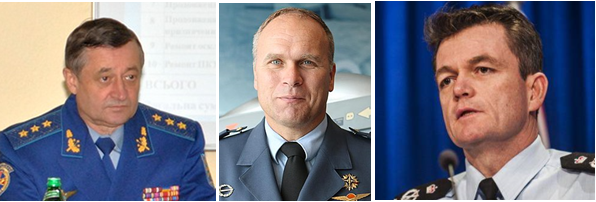
Doubt has been cast on the credibility of these DSB claims from an Australian pathologist, David Ranson, who participated in the post-mortem examinations of the MH17 passengers and crew in The Netherlands, and then again when the Australian bodies were returned home. Ranson reported on the absence of warhead shrapnel to a coroner's inquest on the Australian victims of the incident; for details, read this. A similar finding was reported publicly by George Maat, one of the participating Dutch pathologists, before he was removed by the Dutch Government.
The newly leaked JIT record of the testimony from the villager, observing the action in the sky above his village of Krupskoye, near Torez town, contradicts published reports of clear sky at the time and in the area of the shootdown, as well as images of a vertical smoke trail alleged to be that of a ground launched missile.
The witness, identified in the JIT file as A26, said: "Two airplanes were audible, not the big one, the Boeing, but fighter jets were audible since these were constantly flying overhead, the noise had already become familiar." Read more here.
In van der Werff's analysis, it appears the witness heard sounds of fighter jets and bangs consistent with launch or detonation of missiles; he did not report hearing the sound of aircraft cannon firing.
The Dutch military intelligence agency (MIVD) report of September 21, 2016, was the second responding to a request from the Dutch prosecutors for evidence of BUK missile unit locations at the time of the destruction of MH17; the first MVID report was dated June 24, 2015.
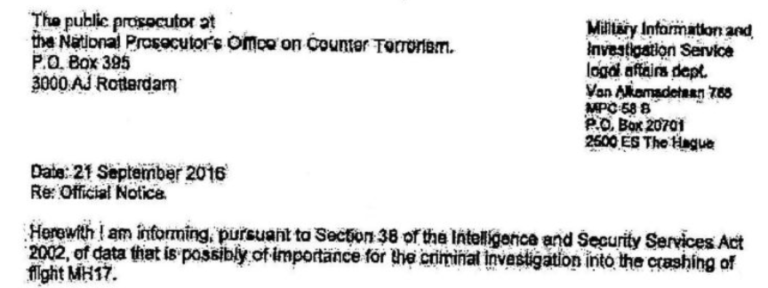
"In July 2014 the Ukrainian armed forces had operational S-300PS Volkhov-M6 systems (referred to as SA-10B GRUMBLE by NATO) at their disposal. In July 2014 operational S-300 PM2 Favorit [systems] (referred to as SA-20B GARGOY by NATO) of the Russian armed forces were present [in] the border region with Ukraine."
MIVD concluded: "it becomes apparent that flight MH17 was flying beyond the range of all identified and operational Ukrainian and Russian locations where 9K37M1 Buk M1 systems were deployed."
Eichelsheim said there was no evidence that either Ukrainian Army BUK units or Russian ones, across the border near Rostov, had been moved into range of the MH17 before the downing. Eichelsheim also said there was no NATO or US radar, electronic reconnaissance or satellite tracking evidence of the movement and operation of a Russian BUK missile unit in MH17 strike range. "MIVD does have (partner) information that would indicate the use of the 36N85 (referred to as TOMB STONE by NATO) fire control radar for the guidance of and/or launch of a surface-to-air missile from the 48NS series (referred to as GARGOYLE by NATO) on 17 July 2014." By his use of the parenthesis "partner", Eichelsheim was telling the Dutch prosecutors he was relying on top-secret NATO and US signals intelligence monitoring the Russian units on the day MH17 was shot down. He was also telling the prosecutors that the "partner" intelligence confirmed the Russian BUKs were beyond the range to strike MH17.
With that parenthesis, Eichelsheim has become the single most important expert witness to be called to testify at the Dutch court. If the examining magistrate or the panel of judges fails to call the intelligence chief to report what Dutch, NATO and US intelligence do not, and cannot substantiate, the court convicts itself - and the Dutch Government with it.
"These locations are in the immediate vicinity of large population centres," Eichelsheim reported in 2016, "and the launch of a missile would most likely have led to messages on social media or other public media. MIVD is not aware of such publications." In other words, the chief of Dutch military intelligence was telling Dutch prosecutors that unless they could come up with "messages on social media or other public media", there was no evidence at all of a Russian BUK missile unit, on either side of the border, in firing range of the MH17. Fabricate the media messages is exactly what the prosecutors did.
Three years later, on June 19, 2019, the JIT announced the incriminating evidence against the four accused comprised telephone recordings and internet images. According to Willem Paulissen, chief of the Dutch National Criminal Investigation Service, these materials had originated from the SBU in Ukraine. Corroboration of these SBU materials with NATO and US signals intelligence Eichelsheim had already admitted, in secret, was impossible.
Left: Dutch police chief Paulissen grins as he acknowledged during the June 19, 2019, press conference of JIT that the telephone tape evidence on which the charges against the four defendants were based came from the Ukrainian SBU. Minute 16:02 Right: Norman Ritter presented his analysis to interviewer Billy Six to show the telephone tape evidence has been forged in nine separate "manipulations". One of the four accused by the JIT, Sergei Dubinsky, testifies from Min. 17 of this film. He says his men recovered the black boxes from the crash site and delivered them to Alexander Borodai, head of the Donetsk administration, at 2300 hours on July 17; the destruction of the aircraft had occurred at 1320. Dubinsky has testified that he had no orders for and took no part in the shootdown. As for the telephone tape-recording evidence against him, Dubinsky says the calls had been made days before July 17, then edited by the SBU. "I dare them to publish the uncut conversations, and then you will get a real picture of what was discussed." (Min. 17:59). On December 19, 2019, a documentary film produced by Vasily Prozorov, a former SBU officer, revealed two Ukrainian Army soldiers from a BUK regiment based near Mariupol, one of the locations identified in the Eichelsheim report. They told Prozorov that a BUK launcher and radar battery unit had left the regiment's base the day before the MH17 shootdown, and returned to base not long after. See Mins 25-26 of the film.But the Dutch prosecutors and the JIT already had independent confirmation from the Australian Federal Police (AFP) that SBU-sourced images had been faked. This is plain in a report of "Operation Avenella", in which two AFP technical experts detailed their analysis of four images, widely published around the world to show a Russian BUK missile carrier moving on Ukrainian territory just before the shootdown. The images have subsequently been endorsed by the JIT and Dutch prosecutors as genuine. The AFP had warned the Dutch this wasn't true.
From the leaked document now available, it is clear the operation code-named Avenella was conducted by the Australian police analysts between April and July of 2015. The report was signed by Shaun Ellis and Tim Johns, and a witness signature added. Ellis has confirmed his identity and AFP role as an "imagery specialist" here. Johns has been confirmed from public sources as a Canberra-based "spatial or Graphic Information System (GIS) professional". Avenella is a type of grass growing wild in the Canberra area.
The two AFP agents reported that in their analysis of four images of a BUK carrier in the Torez area, "the extracted metadata from these four files appears to have been manipulated. For example, the date modified is prior to the date the file was created. Various reasons could explain why this is so, none can be proved without additional information. The image dimensions vary suggesting that the images have been cropped. The image files are small also suggesting the files have been resaved to be smaller and are not primary images that were taken."
Van der Werff has added this explanation: "The process of downsizing photos reduces the pixel count used by objects in the photo. Together with artificial noise, this process can be used to conceal some of the object's details. Most importantly, if something was added to the photo with Photoshop and had flaws visible to the naked eye, resizing it to a smaller size may either hide the flaws or make them less obvious." In the van der Werff-Yerlashova film, first broadcast last July, a local witness living in an apartment building above and to the right of the missile carrier in the street testified that he had seen the vehicle. But he said: "this event did not happen on the 17th but the day before or two days before." The date is evidently not the same as the social media publications had claimed. The date is also not the date which the JIT in 2019, and subsequently Dutch prosecutors, claim as their evidence for the indictment of the four accused.
The leaked AFP document establishes the Dutch had "reasonable doubt" of the social media evidence from their own investigations four years earlier. If the Dutch court fails to exercise the same reasonable doubt, according to Dutch law it is acting illegally.

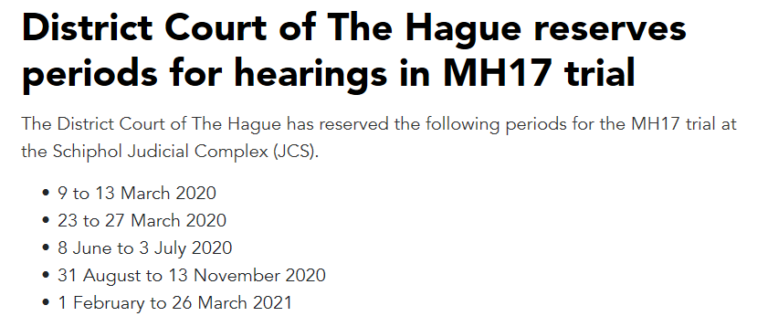
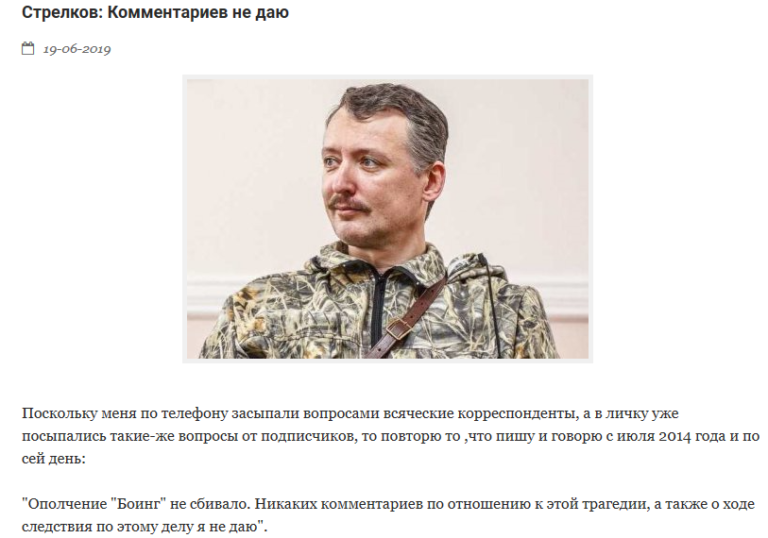
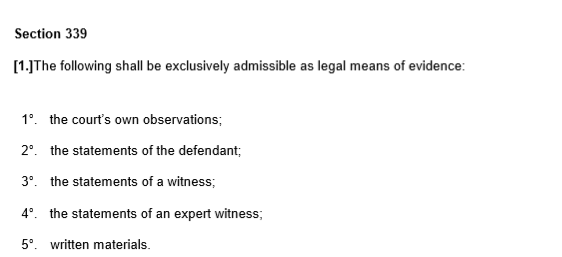
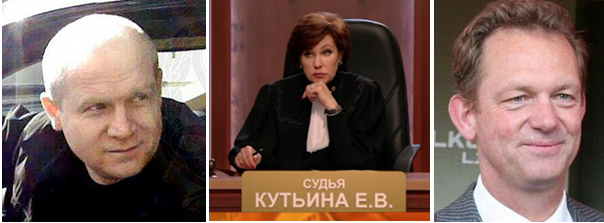
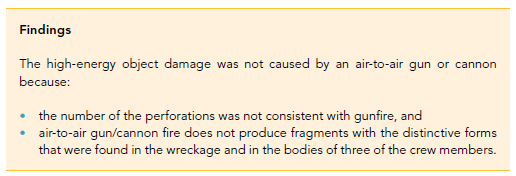


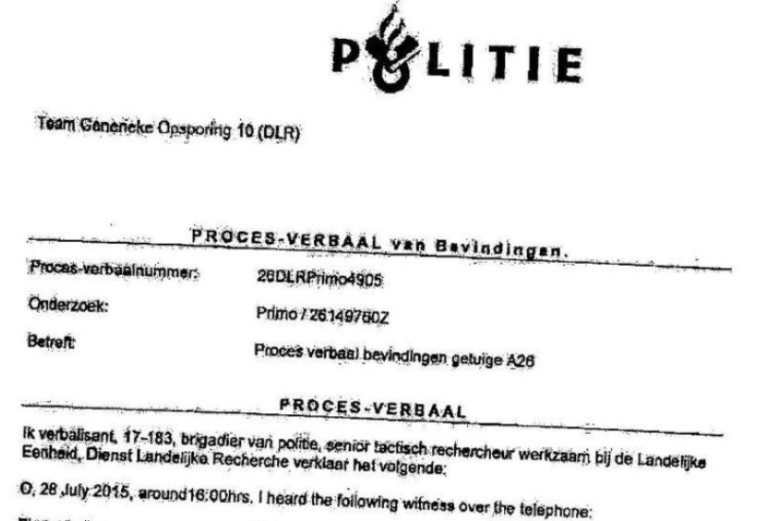
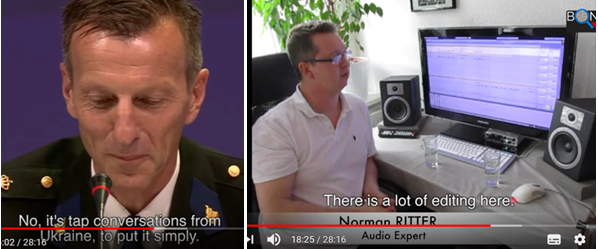
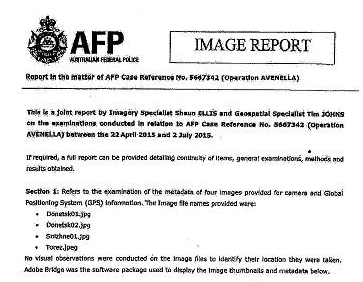




Comment: For more on the recent leaks, see: